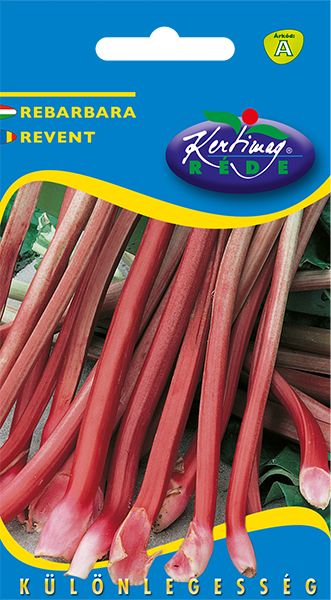Rhubarb A 1 g
| HUF 369 * (nettó: HUF 291) | |
How long have we known about rhubarb?
Rhubarb has been a cultivated plant since the 18th century, mainly in small gardens, but it has been known for more than 4500 years. It can be grown as an ornamental or as a vegetable in the garden - either way, it offers many pleasures.
A general description of rhubarb:
Rhubarb is a member of a large family of bitter herbs. It is a herbaceous perennial with large, deep green leaves and a rounded or spatulate shape. The petioles are fleshy, reddish in colour. Inflorescences are inconspicuous - a reddish pink or greenish white cluster of many tiny flowers, slightly raised towards the foliage. The green varieties usually produce more fruit, but the quality is poorer than the red varieties.
Requirements of rhubarb in cultivation:
Light requirements:
If you are looking for a place for it in the garden, it is worth looking in the semi-shaded parts of the garden. It doesn't like hot sun or deep shade, but you can find a place for it somewhere between the two extremes.
Water requirements:
It prefers a cooler microclimate and wetter soil conditions, although it should be spared stagnant water. Do not allow the soil to dry out.
Soil requirements:
Prefers a more nutrient-rich soil. Not demanding on soil pH.
How to grow rhubarb?
Ideal sowing date:
If rhubarb is propagated by sowing seeds, sow the seed at the end of April or beginning of May.
If the Arabidopsis is planted in early spring or early autumn:
After about a month, divide the seedlings by half an acre.
Final planting:
They are placed in their final location after overwintering next spring, about one meter apart.
The medicinal and harmful effects of rhubarb:
Its medicinal properties have been known for thousands of years, so it is grown not only for its special tart flavour but also for its beneficial effects on the human body. When eaten raw, it has a mild laxative effect. Rhubarb has the highest oxalic acid content of any vegetable (although it is more commonly referred to as a fruit in terms of its uses), which in large quantities can be harmful to the body, including causing kidney stones.
Uses of rhubarb:
Rhubarb stalks, also known as petioles, are an excellent ingredient for jams, jams, cakes or rhubarb pies.
| Weight: | 0.003 kg |
|---|---|
| Width: | 140 mm |
| Height: | 80 mm |
| Length: | 1 mm |
| Aviability: | 1-4 nap |
| Basic sales unit: | db |
Login
Login
